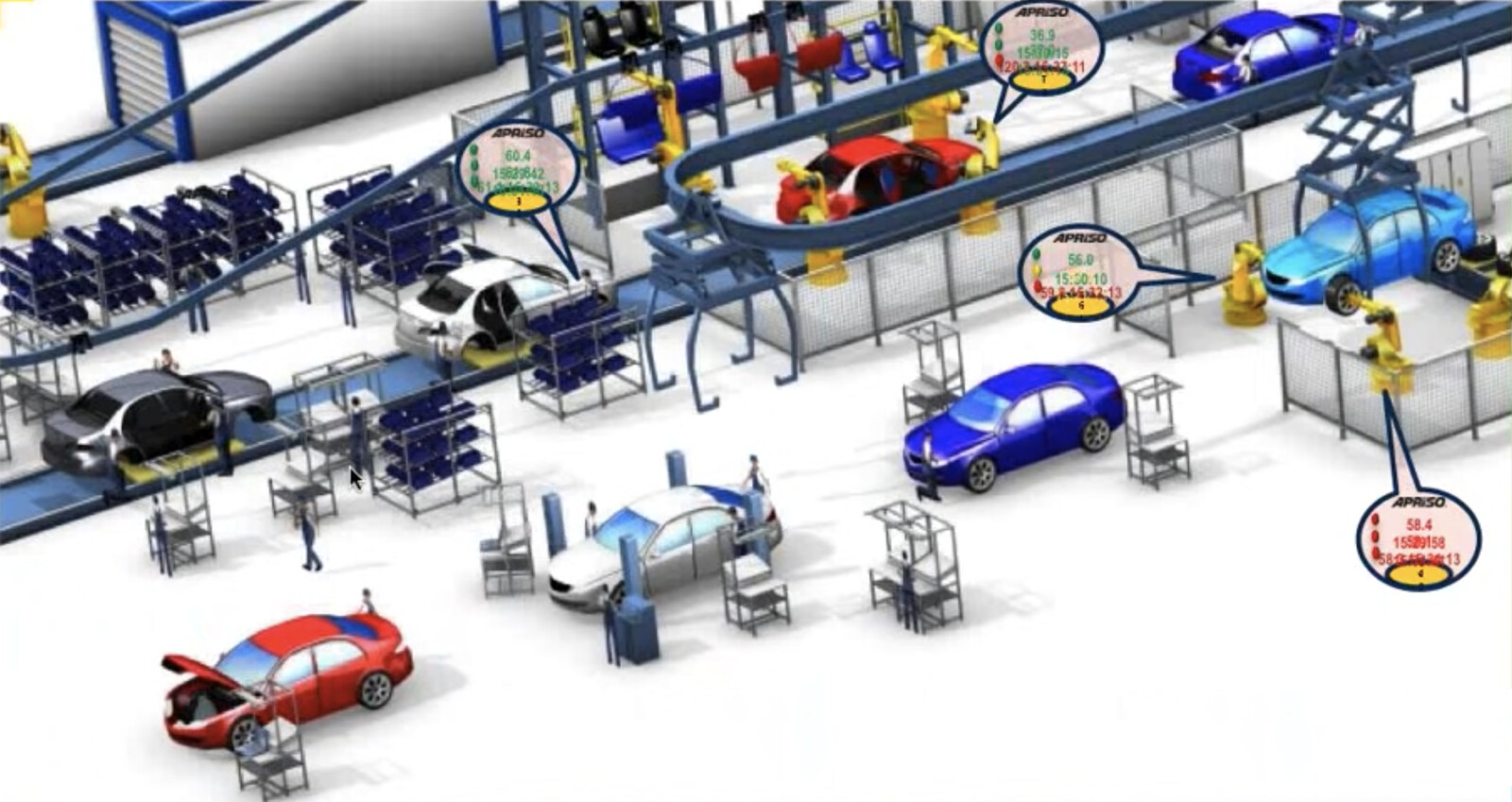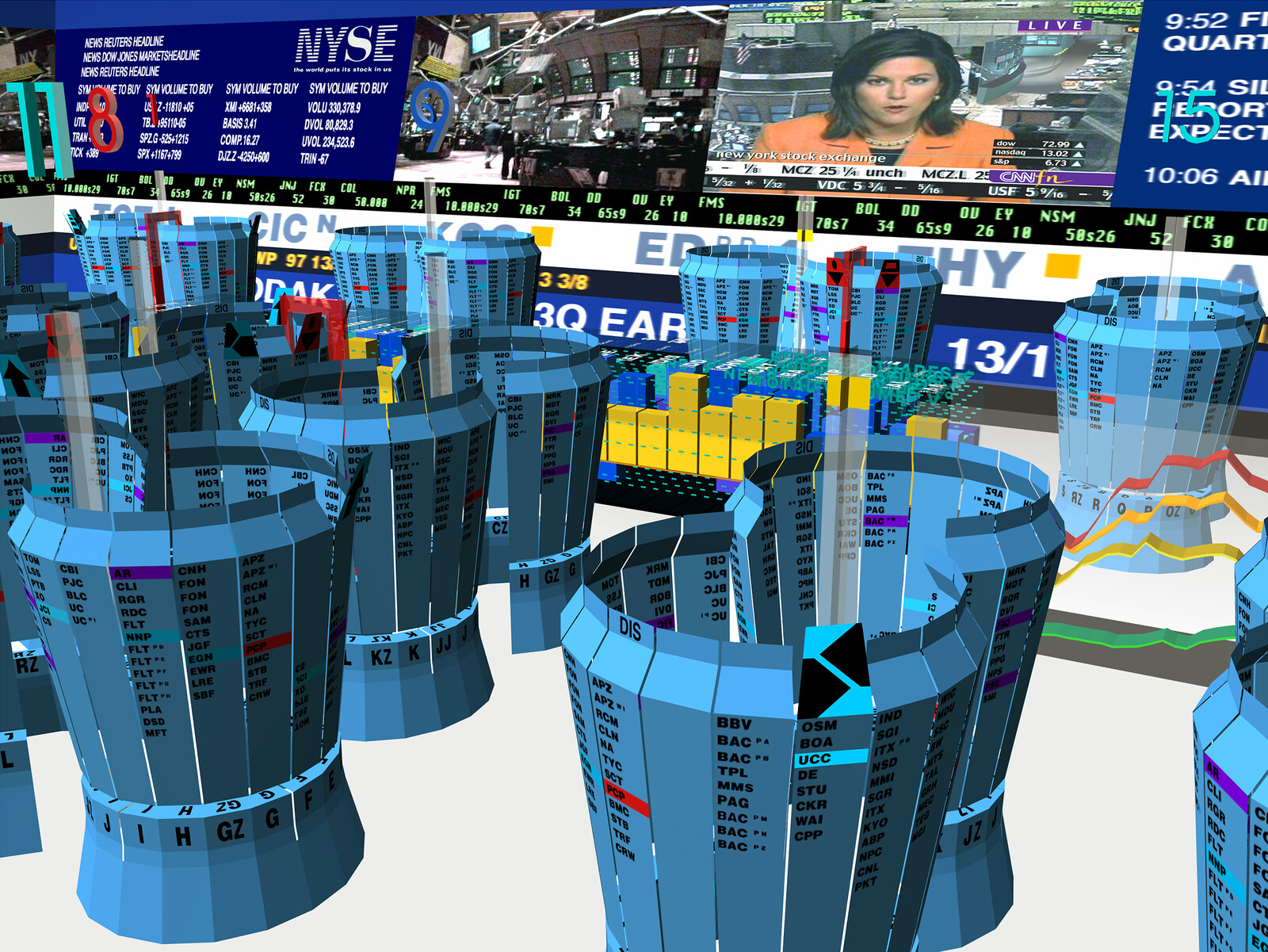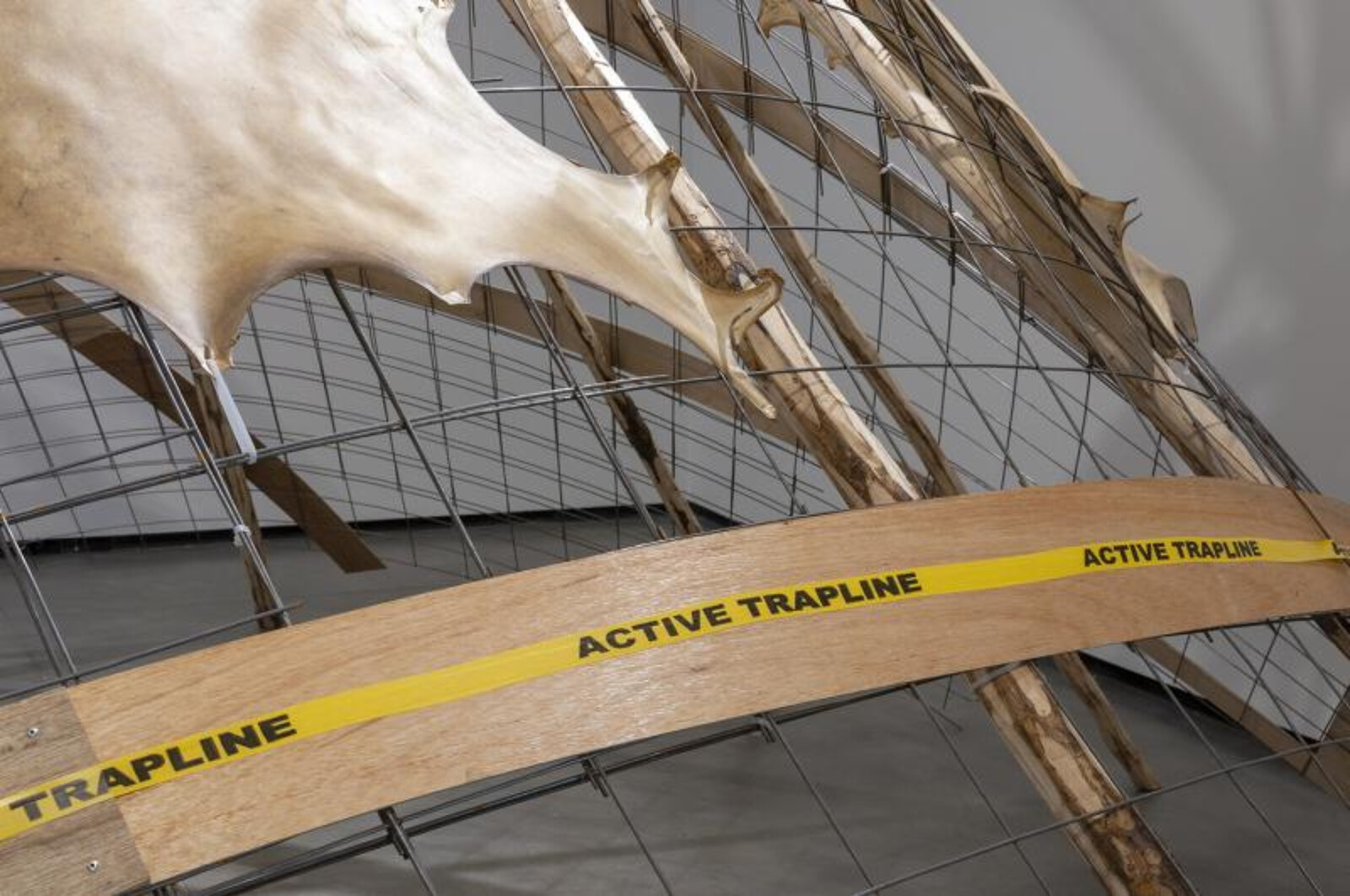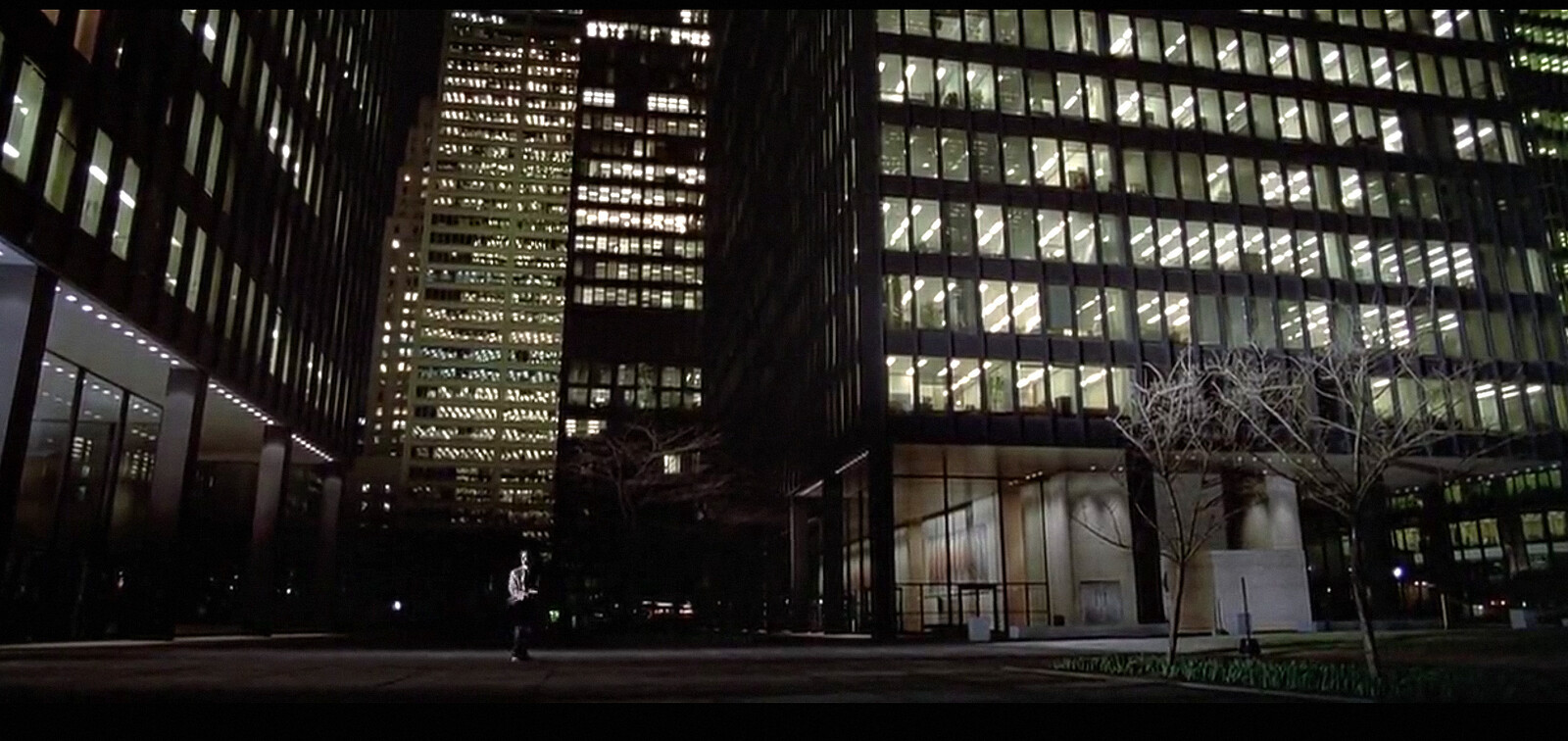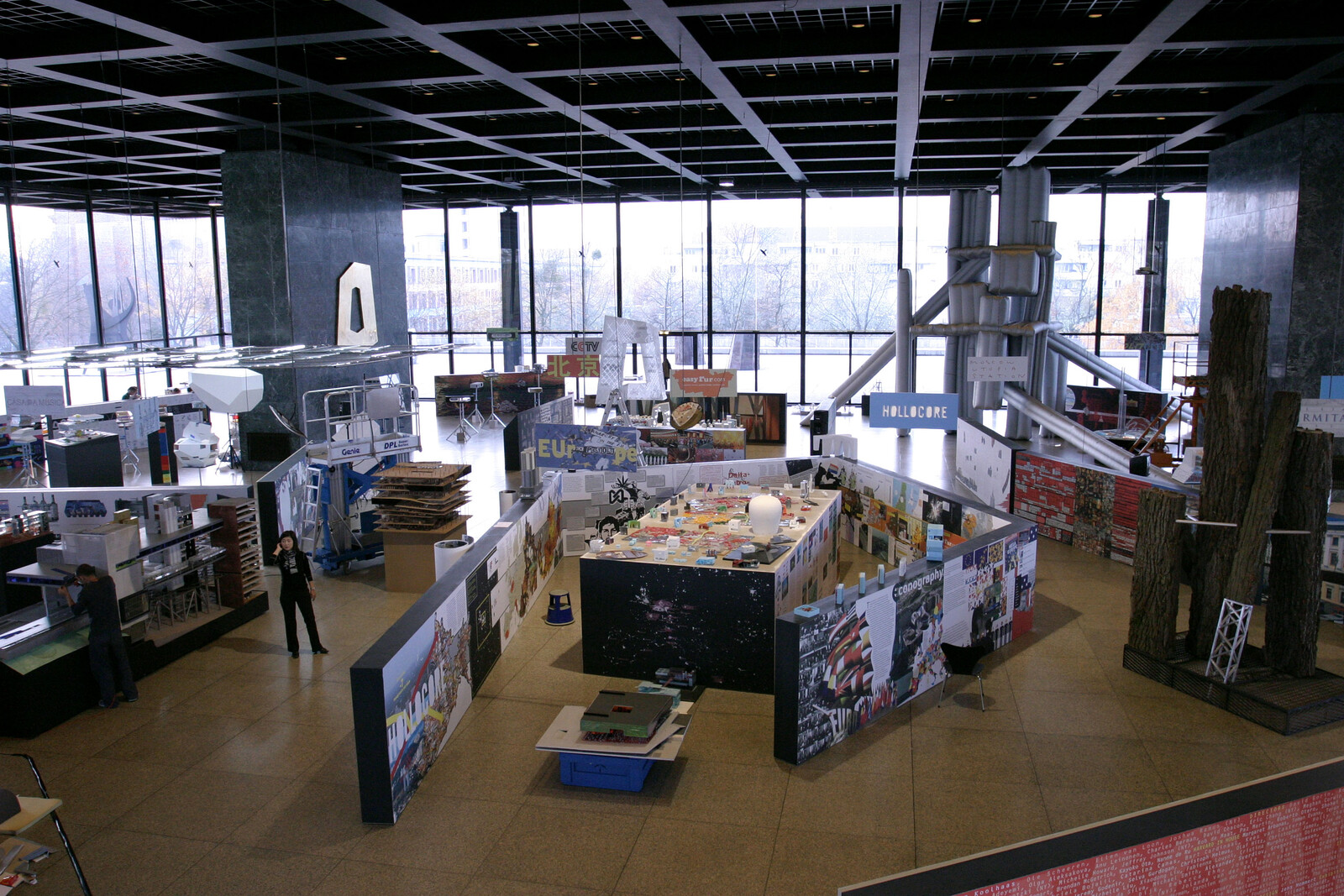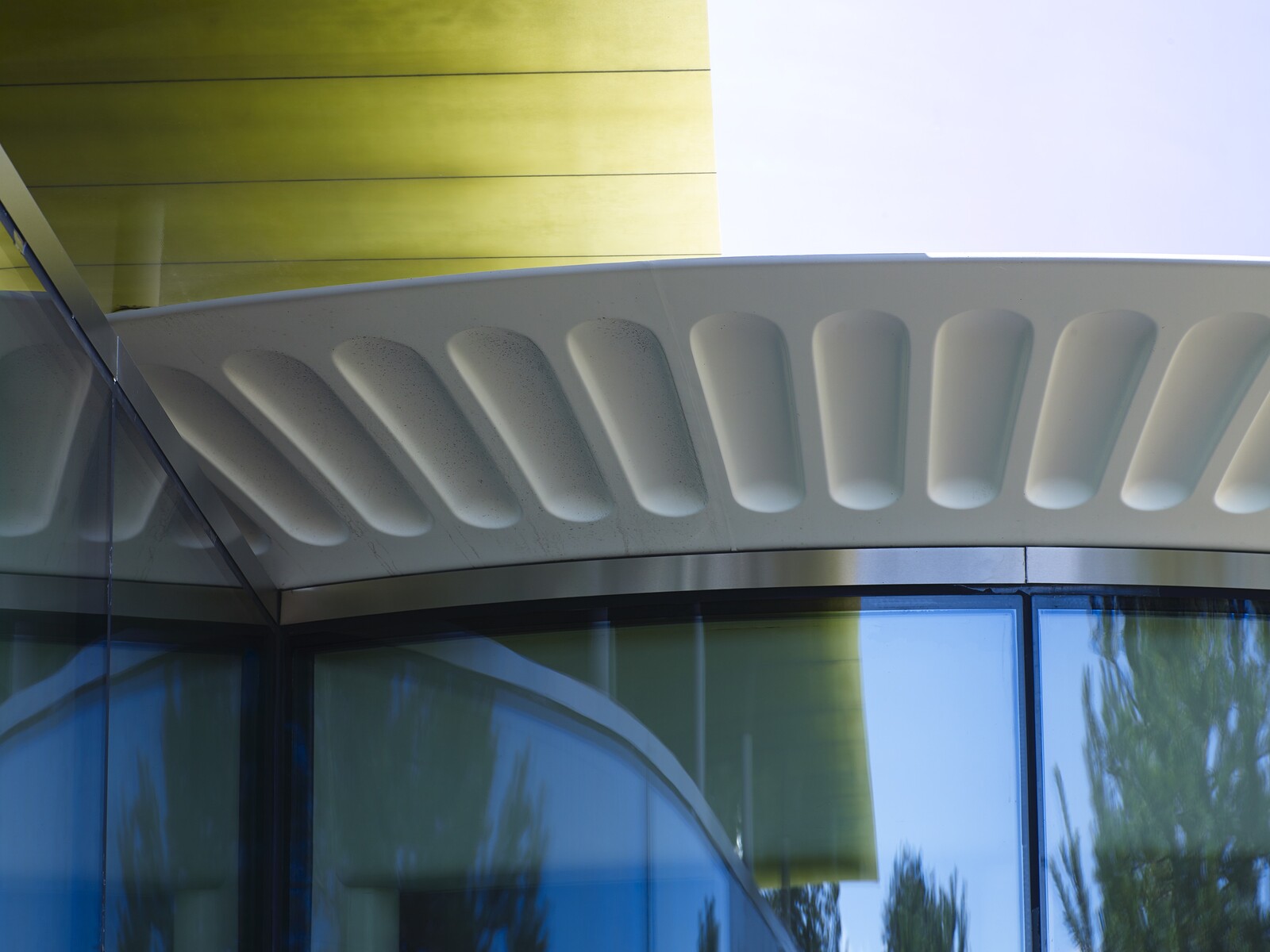In a short story by Jorge Luis Borges entitled “On Exactitude in Science,” an empire is described in which cartography has become so advanced that a map is created at the same size as the empire itself. This map is so detailed and precise that it becomes a perfect replica of the territory, with the result that it becomes useless for practical purposes because it replaces the very thing that it is intended to represent.
Over the past three decades, advances in technology have fostered another kind of representation of a physical object or system not too dissimilar to Borges’s map: the digital twin. Unlike a map reduced to a scale that can be held in one’s hands, or in Borges’s case, walked upon beneath one’s feet, a digital twin is a virtual, three-dimensional model of a building, or even an entire city. The digital twin is more than simply a visual representation of the physical structure, however: it collects and analyzes real-time data about the different environmental and behavioral influences acting upon the structure to optimize user comfort, security, and energy performance.
As technology advances, digital twins continue to find their way into new aspects of the built environment as tools to improve efficiency, reduce costs, optimize the performance of buildings and the people who use them. The presumption of the digital twin, as the mapmakers in Borges’s short story, is that an exact description of reality can be created to anticipate the needs and activities of its users. Yet, these same users are by their very nature unpredictable, making an exact description of reality impossible.
Origins and Applications in Architecture
Digital twins originated in the manufacturing industry as three-dimensional, virtual models of physical objects or systems with the aim of monitoring, controlling, and optimizing their performance. The term “digital twin” is relatively new and is typically ascribed to Michael Grieves who used the term in 2002 as part of his research into product lifecycle management.1 Yet Grieves himself attributes this term to his colleague at NASA, John Vickers, who employed the term several years later in his 2010 NASA roadmap to describe the ultra-realistic simulations of space capsules that could be designed, modelled, and tested without the cost and risks of actual launches.2 General Electric, Siemens, and Rolls Royce were also all designing rotors, turbines, and engines with the aid of digital simulations decades before the designation “digital twin” came into use.3 Many other terms are used in relation to the digital twin concept, including “digital models,“ “Building Information Modelling” (BIM), and “Building Management Systems” (BMS).4 Each are distinct from but important players in the development and functioning of digital twins in the built environment.


Michael Grieves, Diagrammatic description of Digital Twin Concept as “information mirroring” in reference to Rocket Launch Simulation, 2010. Source: Wikimedia Commons.
As the term “digital twin” implies, the technology aims to create a virtual copy of a physical three-dimensional structure. A digital twin is not, however, a digital model, though it uses one as an essential component. Digital models provide a three-dimensional representation of an existing or projected structure and can be used for visualization, documentation, description, or study. But within a digital twin, the digital model is no longer used for visualizing or guiding the construction of a design proposition. Rather, it acts as an avatar of an existing edifice. In this role, forms, spaces, and elements of the model are used to control, predict, and optimize the performance of buildings based upon real-time data from environmental systems or utility meters, as well as sensors that monitor such phenomena as structural stress levels, occupancy, and lighting.
The attribution of data to digital models owes much to the development and integration of Building Information Modelling (BIM) software, which integrates rich, detailed, and accurate data about a building’s design, construction, and operational characteristics into a virtual model. The concept of BIM has been around since the 1970s, ever since the introduction of software tools for building modelling, yet the first commercial BIM product for personal computers is typically ascribed to the launch of ArchiCAD in 1987. In ArchiCAD, elements were parametrically/associatively connected and included corresponding construction information.5
A significant development of BIM technology occurred with release of Revit by Autodesk in 2000. The novelty of Revit—whose name is a play on “revise instantly”—was its provision of a single collaborative environment that enabled multiple users to create, work, and store data on the same model all at the same time by automatically propagating changes and keeping the model consistent.6 In this way, Revit’s vision of BIM models might be compared to the use of the 1:20 scale wooden Modellone of the Milan Cathedral, on which various fifteenth and sixteenth century architects and carpenters took turns cutting, removing, and adding different designs for the façade, aisles, spires, embrasures, and flying buttresses before construction.7 Yet with all of the information that is stored in each BIM model element—from material designation, to when components were installed, estimated energy performances, fire rating, durability, lighting, acoustic and structural performance, and more—simulations can be run to measure and predict energy usage, carbon, lighting, acoustics, structural performance, and thermal comfort, just to name a few.8
Both digital twins and BIM models are digital representations containing data about a physical structure. Yet BIM models represent and contain information during the design and construction of an edifice, while a digital twin uses such data to manage the operation of the building after completion. Not simply a static digital mock-up of an architectural project, a digital twin brings together data from subsystems and real-time interactions between people, processes, and connected things. Digital twins are therefore predicated on the proliferation of Internet of Things (IoT) technologies, which are increasingly employed to control and optimize the performance of many contemporary developments in the built environment.9 In a digital twin, data from those types of systems not only flow from the existing physical object to the digital object, but also, and crucially, back again. Digital twins use sensors and other IoT devices to collect real-time data about room temperature, lighting, shading, energy, water utilization, and use this to compare it to an abstract model of operational efficiency and comfort parameters and adjust mechanical building systems accordingly.10 The goal of these systems is to work automatically, to be intelligent; to learn, anticipate, and act seamlessly, without intervention, without recognition.
The term “smart city” describes the similar utilization of real-time data to inform decisions and implement changes aimed at enhancing the development and functionality of urban areas.11 The idea of a smart city has been around since the 1960s and 1970s in cities like Los Angeles whose Community Analysis Bureau at the time used computer databases, cluster analysis, and infrared aerial photography to gather data, produce reports on neighborhood demographics and housing quality, and help users of this information to direct resources to ward off “blight” and tackle poverty.12 Such real-time data-driven approaches are now employed by the same city to help make sections of its built environment more sustainable and reduce carbon emissions. Singapore is currently developing a digital twin of the whole city-state for use by public, private, and research sectors as a tool for assisting policy and business analysis, decision making, test-bedding of ideas, community collaboration, and other activities that require spatial information.13 Similarly, the Government of New South Wales, Australia, is creating an open-source interactive platform on which to capture and display real-time 3D and 4D data on the urban environment.14 Such urban digital twins can be used to monitor and study pollution, air quality, and air flow, as well as manage traffic.15
Compared to physical city models, which have long been used to as planning tools, a digital twin does not take up much space, is easy to update, can be studied from different points of view, and is accessible to a variety of users. Early examples of such models include the 1:1200 scale Panorama of the City of New York from 1964 and the more recent 1:500 model of Shanghai, just to name a couple. However, these models were primarily valued for their function as instruments of persuasion or propaganda, rather than for their potential as tools for optimization and prediction.16 And like the small-scale physical model of an individual building in all these examples, it is not necessary for digital twins to be a realistic representation of its physical counterpart; they can be relevant abstractions. In other words, digital twins need only be fit for purpose, and the level of fidelity will vary depending on the primary use cases.17 What makes the digital twin so appealing is its role as both a virtual copy of a real object and resource of data about the processes actively occurring within its system.
Limits and Challenges of Digital Twins in Architectural Practice
Although many successful applications of the digital twin concept are already employed in managing existing building and cities, they are still in their infancy, and there are still numerous technological and ethical issues to reckon with. These tools are being touted as ideal platforms for creating the built environment of the Metaverse and exemplars for developing digital twins of our bodies and personalities. Despite the increasing sophistication of software platforms for the control of our built environment, however, they remain disembodied and inert tools that require a reasoning and creative mind to give them agency and direct their applications.
Some of the challenges commonly encountered when using digital twins in the built environment include data integration, verification, concerns for privacy, cost, and stakeholder engagement. Digital twins rely on data from various sources including sensors, a Building Management System (BMS), design models, user preferences, and more. These sources may use proprietary devices that are not easily compatible with each other, making it challenging to gather data and establishing interoperability of all systems connected to the digital twin.18 Further, data from these different sources requires frequent verification and validation to ensure that the digital twin is an accurate representation of the physical system it twins. The upkeep and management of digital twins, including updating software, making changes to the model that correspond to changes in physical assets, and enhancing its capabilities with ever more sensors, can be incredibly costly. And some of the data collected may contain personal information that can raise concerns about data privacy and security, which is made even further complicated by the fact that digital twins can also be subject to ransomware or other cyber-attacks.19
There are many challenges to integrating a digital twin within existing systems, processes, and workflows.20 Nevertheless, its potential to optimize reality has made the digital twin an appealing concept and source of data in other fields of discourse. Advocates for the development of virtual worlds as social, entertainment, and business venues have, for instance, proposed that digital twins of existing cities can contribute to the creation of the Metaverse.21 While experiencing a city’s buildings, sidewalks, traffic lights, textures, commercial products, etc. through a digital avatar is certainly possible, it seems to miss the point of a digital twin.22 In the Metaverse, designers can create virtual worlds that don’t need to have a foothold in the real world.23 Issues such as gravity, daylighting, or material performance are only relevant as far as the designer wishes them to be. Digitally twinned cities, however, do not need to provide the same visually detail, which might mean little to an architect or planner who uses the tool to study issues such as setback requirements, shadow impacts, administrative boundaries, zone designations, location of below ground infrastructure, historical considerations, air quality, energy production, demographics, etc.24
Recent developments in Artificial Intelligence (AI) have extended the digital twin concept to humans as an aid to optimizing different aspects of our lives. In the fields of medicine, sports performance, manufacturing ergonomics, and product design, the term idea of a digital twin has emerged as an approach to using software and AI to not only twin physiological characteristics but inner qualities such as personality, sensibilities, thoughts, and skills.25 In physiological terms, Human Digital Twins (HDT) consists of an individual’s health data using medical and CT scans to create a model of the digital body to provide detailed, individual medical and health information or advice to optimize the health of an individual or performance of an athlete. The concept behind a human digital twin to resemble our personalities and assist users in tasks or making decisions is familiar practice.26 Commercial entities including Facebook or Google use AI to capture information about our preferences and personalities from our social networks, use of the internet, smart gadgets, home appliances and mobile devices with the aim of refining our experiences.27 Already and often unintentionally, such preferences are used by Facebook and Google to provide people with websites, images, or new articles based upon their search preferences. It would seem however, that the use of the term ‘human digital twin’ in these instances is not accurate as there is no virtual three-dimensional model or search process of the user but only a collection of user-specific data.
The challenge of using digital twins to create exact descriptions of human activities, whether as an occupant of a building or its designer, is that human behavior is unpredictable. The German sociologist Niklas Luhmann argued that people’s actions are influenced by multiple factors, the complexity of which makes it impossible to accurately predict human behavior.28 And even if digital twins make informed decisions about lighting, security, and thermal comfort based on facts about the occupancy rates, these systems are ultimately limited in their ability to change the use of a space. Humans live in the world and are playful, ascribe meaning to things, have emotions, an independent self-image, individual goals, and make decisions to act differently in different settings.29 All these attributes pose challenges for creating digital twins as exact replicas that anticipate the use or performance of the built environment. The relevant variables are not predictable nor directly measurable or measured.
Conclusion
Digital twins are predicated on the idea that with enough sensors and computing power they can create an exact description of reality and in this way optimize performance. Yet cities and building are faced with a plurality of goals that need to be met. Individual and societal decisions are not just about optimization and control. They can trigger the exploration of new solutions and result from interactions in many parts of the system.
Returning to Borges’s story, the title “On Exactitude in Science” pokes fun at individuals who believe, quite naively, that they can use tools like digital twins to produce a perfect description of reality.30 For science can be understood as a map, a representation of a territory, which here includes the built environment. The perfect map is one that reproduces precisely all the details of whatever it is mapping. But this is a paradox: if the map is as large as the territory, it has no value whatsoever because it replaces the real thing. Science similarly wants to know as much as possible about the world and turn it into a description that we can share (the digital twin) and control (the building). The more we know, the better the map is. However, as the French philosopher Bernard Le Bovier de Fontenelle noted in 1686, there is only so much that we can see of the world: any map we produce is by necessity incomplete.31
Nevertheless, digital twins in architecture are here to stay. Buildings and cities are complex systems in an environment filled with people that continue to change throughout the day, season, year, and lifetime of their use. By combining data from sensors, simulations, and other sources, digital twins can provide a more accurate and detailed understanding of how a building or city is performing in the real world that a building manager or planner can acquire from the use of physical plans and models. Armed with such data, digital twins can help users identify potential issues or inefficiencies and optimize systems that can save time and resources, leading to better outcomes. Additionally, digital twins have the potential to offer a platform for testing and refining different design options in a virtual environment, which can help architects and urban planners make more informed decisions about which approaches are most sustainable. As buildings and cities continue to evolve and grow more complex, digital twins in architecture will only play an increasingly important role in architecture and urban planning in the years to come—a role that despite all its advantages, must be able to evolve and accommodate an environment that is changing and occupied by users who are random by nature.
Michael Grieves, “Digital Twin: Manufacturing Excellence through Virtual Factory Replication,” White paper (2014); Accessed January 2023. See ➝.
Michael Grieves, “Physical Twins, Digital Twins, and the Apollo Myth,” 2022. Accessed January 2023. See ➝; Piascik, R., Vickers, J., Lowry, D., Scotti, S., Stewart, J., & Calomino, A. (2010). Technology area 12: Materials, structures, mechanical systems, and manufacturing road map. NASA Office of Chief Technologist; Piascik, R., Vickers, J., Lowry, D., Scotti, S., Stewart, J., & Calomino, A. (2010). Technology area 12: Materials, structures, mechanical systems, and manufacturing road map. NASA Office of Chief Technologist.
Volker Buscher, “Current State of Digital Twins,” in Arup, Digital twin: Towards a meaningful framework, (2019). See ➝.
W. Kritzinger, M. Karner, G. Traar, J. Henjes and W. Sjihn, “Digital Twin in manufacturing: A categorical literature review and classification”, IFAC PapersOnLine 51, no. 11 (2018): 1016-1022.
Throughout the 1990s the term “Building Information Modelling” was coined, and a variety of software programs were developed that advanced the BIM concept. In 1992 G.A. van Nederveen and F. Tolman first used the term “Building Information Modelling” in an article to describe how different aspects of a building such as its spatial design, structure and energy could brought together as “aspect models” of common building model. G.A. van Nederveen, F.P. Tolman, “Modelling multiple views on buildings,” Automation in Construction 1, no. 3 (1992): 215-224.
“A Brief History of BIM / Michael S. Bergin” 7 Dec 2012. Accessed January 2023. See ➝.
L. Quartana, “Il restauro del modello ligneo del Duomo di Milano,” in Conservare e Restaurare il legno, Atti del Convegno di Studi, Bressanone, eds. G. Biscontin, G. Driussi, 23-26 June 2009 (Marghera-Venezia: Arcadia ricerche, 2009), 719-732.
Mingyan Deng and Carol C. Menassa and Vineet R. Kamat, “From BIM to digital twins: a systematic review of the evolution of intelligent building representations in the AEC-FM industry,” Journal of Information Technology in Construction 26 (February 2021): 58-83.
Muhammad Shahzad, Muhammad Tariq Shafiq, Dean Douglas, and Mohamad Kassem, “Digital Twins in Built Environments: An Investigation of the Characteristics, Applications, and Challenges” Buildings 12, no. 2 (2022): 120.
This data from the physical building is then combined, processed, and used to understand, analyze, manipulate, and optimize processes within what may be termed a “smart building.” A.H. Buckman, Mayfield, M. and B.M. Beck, S., “What is a Smart Building?”, Smart and Sustainable Built Environment 3, no. 2 (2014): 92-109.
Andrea Caragliu, Chiara Del Bo, and Peter Nijkamp, “Smart cities in Europe,” Journal of urban technology 18, no. 2 (2011): 65-82.
Los Angeles Community Analysis Bureau, State of the City II: A Cluster Analysis of Los Angeles, City of Los Angeles, 1974.
National Research Foundation, Singapore Government: “Virtual Singapore.” Accessed January 2023. See ➝.
New South Wales Government, Spatial Services: “NSW Spatial Digital Twin.” Accessed January 2023. See ➝.
G. Mylonas, A. Kalogeras, G. Kalogeras, C. Anagnostopoulos, C. Alexakos and L. Muñoz, “Digital Twins From Smart Manufacturing to Smart Cities: A Survey,” IEEE Access 9 (October 2021): 143222-143249.
Andrew Toland and Simon Kilbane, “City mega-models as literal and figurative visioning tools,” Urban Design and Planning 171, no. 4 (August 2018): 166-176.
Michael Batty, “Digital twins,” Environment and Planning B: Urban Analytics and City Science 45, no. 5 (2018): 817-820.
Muhammad Shahzad, Muhammad Tariq Shafiq, Dean Douglas, and Mohamad Kassem, “Digital Twins in Built Environments: An Investigation of the Characteristics, Applications, and Challenges,” Buildings 12, no. 2 (2022): 120.
D Fagella, “Sentient World Simulation and NSA Surveillance - Exploiting Privacy to Predict the Future?” Emerj. Artifical Intelligence Research (2017). Accessed January 2023. See ➝.
D Helbing and P Seele, ‘We Need Peace Rooms, Not War Rooms’ (The Globalist, 2017). Accessed January 2023. See ➝.
M. Aloqaily, O. Bouachir, F. Karray, I. A. Ridhawi and A. E. Saddik, “Integrating Digital Twin and Advanced Intelligent Technologies to Realize the Metaverse,” in IEEE Consumer Electronics Magazine (2022), doi: 10.1109/MCE.2022.3212570.
Mark van Rijmenam, “Why Digital Twins Are One of the Building Blocks of the Metaverse,” The Digital Speaker (April 13, 2022). Accessed January 2023. https://www.thedigitalspeaker.com/digital-twins-building-block-metaverse/; Musadiq Bidar, “Companies race to build “digital twins” in the metaverse,” (March 2022). Accessed January 2023. See ➝.
Jee Heon Rhee and Seung Hyun Cha, “Architectural Design in Metaverse Case Study,” Journal of the Architectural Institute of Korea 38, no. 7 (2022): 69 – 80.
Ville V. Lehtola, Mila Koeva, Sander Oude Elberink, Paulo Raposo, Juho-Pekka Virtanen, Faridaddin Vahdatikhaki, Simone Borsci, “Digital twin of a city: Review of technology serving city needs,” International Journal of Applied Earth Observation and Geoinformation 114 (2022): 102915.
This term has been applied in diverse fields, including medicine, sports performance, manufacturing ergonomics and product design. Michael E. Miller and Emily Spatz, “A unified view of a human digital twin,” Human-Intelligent Systems Integration 4 (2022): 23–33.
Jianshan Sun, Zhiqiang Tian, Yelin Fu, Jie Geng & Chunli Liu, “Digital twins in human understanding: a deep learning-based method to recognize personality traits,” International Journal of Computer Integrated Manufacturing 34, no. 7-8 (2021): 860-873.
Ted Hunt “Meet the Digital Twin you probably didn’t realise you had,” Medium (January 2018). Accessed January 2023. See ➝.
Niklas Luhmann, Introduction to Systems Theory, trans. Peter Gilgen (Cambridge, UK: Polity, 2013).
Maurice Merleau-Ponty, “Eye and Mind,” in The Merleau-Ponty aesthetics reader: philosophy and painting, ed and trans. Michael B. Smith (Evanston: Northwestern University Press, 1993), 121-149.
Amelyn Ng appears to be referencing the same Borges story in her paper, “From Models to Mirror Worlds” which she claims is a biased critique of simulations whose precision replaces reality. Ng instead argues that digital modelling of “the world” does not stem from a desire to create a perfect representation of it but to operationalize it. For Ng, one should be cautioned not to let the positivism and prejudice that such an approach affords to be mirrored in reality. Amelyn Ng, “From Models to Mirror Worlds,” Cultural Politics 18, no 3 (2022): 305–307.
Bernard Le Bovier de Fontenelle, Conversations on the Plurality of Worlds (1686), trans. H. A. Hargreaves (Berkeley: University of California Press, 1990).
On Models is a collaboration between e-flux Architecture and The Museum of Contemporary Art Toronto.
Category
The title to this essay was provided by ChatGPT-3.
